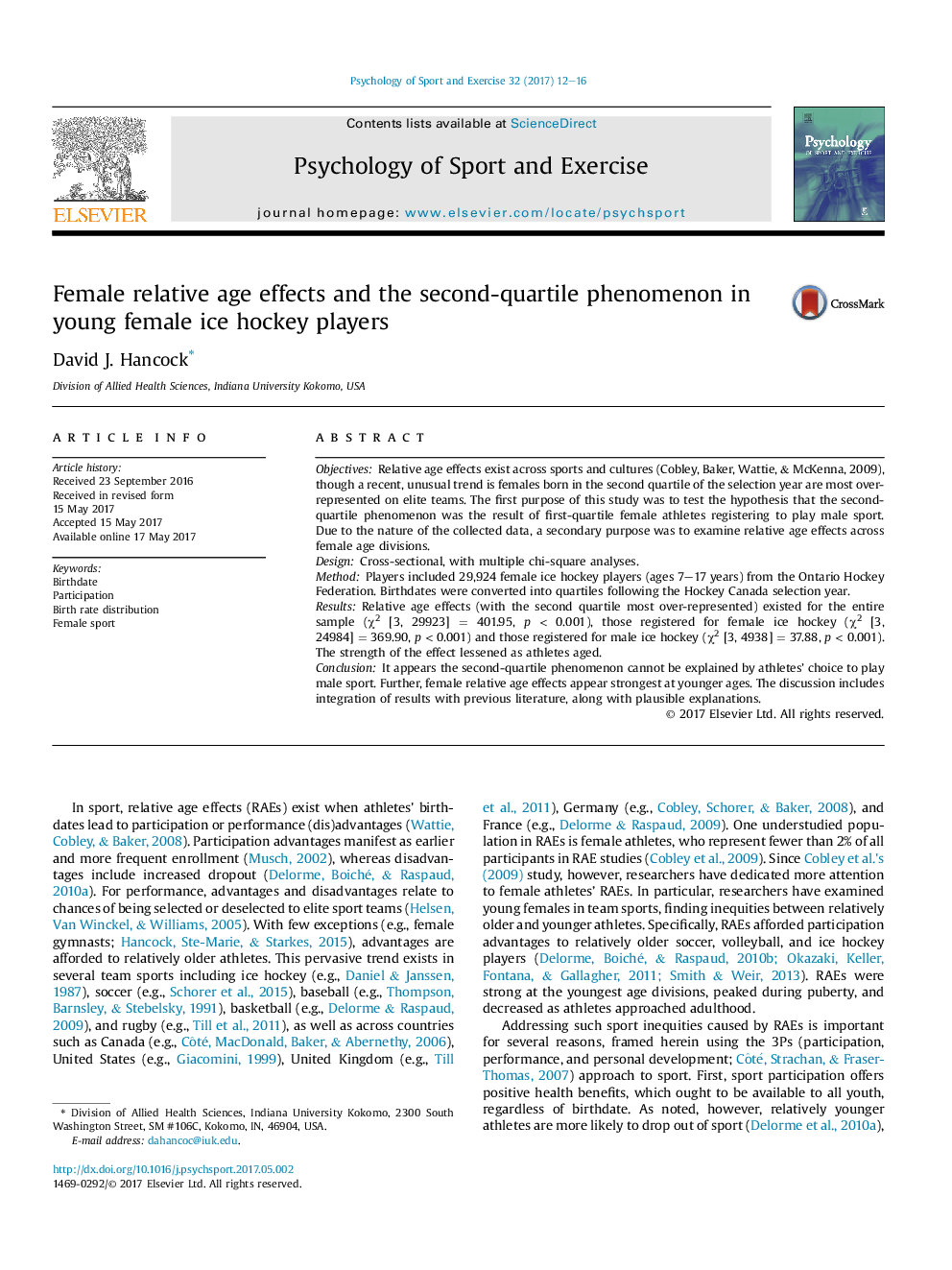| کد مقاله | کد نشریه | سال انتشار | مقاله انگلیسی | نسخه تمام متن |
|---|---|---|---|---|
| 5036466 | 1472095 | 2017 | 5 صفحه PDF | دانلود رایگان |
- Relative age effects in female athletes show Q2 athletes as over-represented.
- Tested if Q2 phenomenon is explained by female athletes' registration decisions.
- Relative age effect (with Q2 over-represented) existed on female and male teams, and was strongest at youngest age divisions.
- Must analyze multiple sports and age divisions in one region to understand effect.
ObjectivesRelative age effects exist across sports and cultures (Cobley, Baker, Wattie, & McKenna, 2009), though a recent, unusual trend is females born in the second quartile of the selection year are most over-represented on elite teams. The first purpose of this study was to test the hypothesis that the second-quartile phenomenon was the result of first-quartile female athletes registering to play male sport. Due to the nature of the collected data, a secondary purpose was to examine relative age effects across female age divisions.DesignCross-sectional, with multiple chi-square analyses.MethodPlayers included 29,924 female ice hockey players (ages 7-17 years) from the Ontario Hockey Federation. Birthdates were converted into quartiles following the Hockey Canada selection year.ResultsRelative age effects (with the second quartile most over-represented) existed for the entire sample (Ï2 [3, 29923] = 401.95, p < 0.001), those registered for female ice hockey (Ï2 [3, 24984] = 369.90, p < 0.001) and those registered for male ice hockey (Ï2 [3, 4938] = 37.88, p < 0.001). The strength of the effect lessened as athletes aged.ConclusionIt appears the second-quartile phenomenon cannot be explained by athletes' choice to play male sport. Further, female relative age effects appear strongest at younger ages. The discussion includes integration of results with previous literature, along with plausible explanations.
Journal: Psychology of Sport and Exercise - Volume 32, September 2017, Pages 12-16
